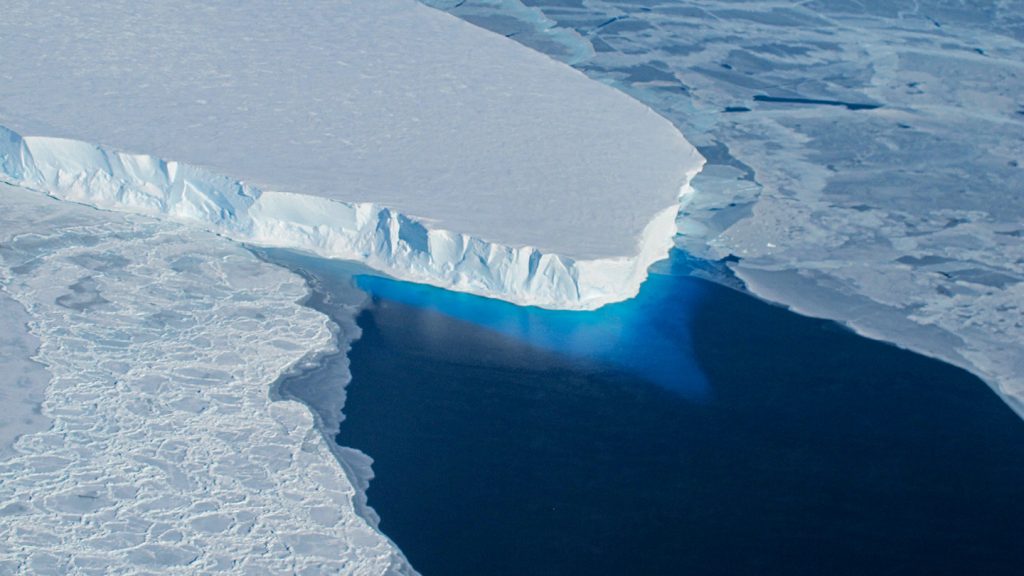In Antarctica, a major glacier, Thwaites Glacier, is facing a new threat as warm seawater from the ocean infiltrates underneath the glacier, melting it from below. This phenomenon was recently discovered through satellite measurements, revealing that as the tide rises, seawater forces its way beneath the glacier, moving several kilometers inland before being flushed back out as the tide recedes. This constant inflow of warm seawater is accelerating the ice retreat of the glacier, ultimately contributing to rising sea levels.
The West Antarctic Ice Sheet, where Thwaites Glacier is located, is constantly under attack by warm ocean currents due to its vulnerable position in a basin-shaped ocean basin. The edges of the ice sheet are continuously assaulted by warm, dense, salty ocean currents, particularly along the coastline where Thwaites Glacier empties into the ocean. Thwaites Glacier is currently experiencing significant ice loss due to the continuous assault of warm seawater on its edges.
One of the main reasons for Thwaites Glacier’s ice loss is the melting and retreat of its grounding line, where the glacier rests on the seafloor. As the grounding line recedes, it reduces friction at the glacier’s bed, allowing it to slide more rapidly and release ice into the ocean. This process contributes to rising sea levels and accelerates the glacier’s retreat, highlighting the urgency of understanding and mitigating the impacts of warm seawater infiltration on glaciers.
As satellite radar measurements have become more frequent and accurate, researchers have been able to capture the dynamic movement of the seawater underneath Thwaites Glacier in greater detail. The intrusion of seawater beneath the glacier, which happens with each high tide, injects thermal power into the ice, accelerating its melting. This phenomenon can melt significant portions of the ice each year, ultimately affecting the stability of the glacier and its contribution to rising sea levels.
By closely studying the patterns of seawater intrusion beneath Thwaites Glacier, researchers have identified that the seawater preferentially migrates under the ice in areas between subglacial freshwater rivers, where it can flow effectively and lift the ice due to pressure differences. This kind of saltwater intrusion could potentially double the rate of ice loss in some glaciers, as suggested by recent simulations. Understanding and including this new phenomenon in computer simulations will be crucial for accurately predicting future ice loss and sea level rise due to glacier retreat.
Overall, the discovery of seawater intrusion beneath Thwaites Glacier is a critical development in understanding the dynamics of glacier retreat and sea level rise in Antarctica. As researchers continue to monitor and analyze these phenomena, incorporating this new knowledge into models and predictions will be essential for informing future climate change strategies and adaptation measures to mitigate the impacts of glacial melting on global sea levels.















